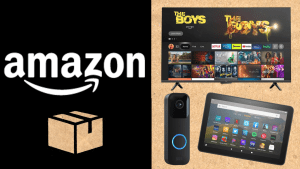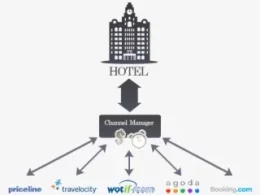Introduction: Amazon’s Vision and Plans
The concept of a smart home has evolved significantly over the past decade, and at the forefront of this transformation is Amazon’s Alexa. With more than 400 million smart home devices connected to Alexa and millions of users utilizing Alexa’s capabilities each week, Amazon is now setting its sights on the future of smart homes. In this article, we’ll delve into Amazon’s vision for the future of smart homes and the exciting plans they have in store.
A Home that is Intuitive and Conversational
While voice commands have revolutionized how we interact with smart devices, there is always room for improvement. Amazon recognizes this and is introducing a new large language model (LLM) to make interactions with Alexa even more intuitive and conversational. This LLM is designed to understand the unique setup of each user’s home, allowing for more natural language commands.
With this advancement, Alexa can now process ambiguous requests. For instance, saying, “Alexa, I’m cold,” will prompt Alexa to adjust the temperature without the need for specific commands. Additionally, Alexa will become better at understanding context, making it easier to control new devices added to your smart home. These improvements aim to reduce the need for users to remember precise device names or phrases.
A Home that is Uniquely Yours
One of the challenges in the world of smart homes is the diversity of devices from various brands. Amazon embraces interoperability and is a supporter of open standards. They have introduced support for Matter, a smart home standard that facilitates the seamless integration of devices from different brands. Over 100 million Echo and eero devices already support Matter.
To further simplify device integration, Amazon has introduced Dynamic Controller and Action Controller, allowing device makers to specify unique functions and actions for their devices. This means that users can make more conversational requests, such as asking Alexa to handle specific tasks without the need for complex commands.

A Home that is Proactive
Amazon aims to create technology that works on behalf of the user. Currently, 40% of smart home actions are initiated by Alexa without user prompts. To further enhance this proactive aspect, Alexa will soon be capable of detecting room brightness and activity. With the help of compatible Echo devices and sensors, Alexa will intelligently control lighting based on room conditions, eliminating the need to manually switch lights on or off.
The introduction of new Routines, such as Featured Routines for Ring devices and Morning Routines for families, will further automate daily tasks and enhance user experiences.
A Home that is Easy to Control
As the number of connected devices in smart homes continues to grow, ease of control becomes crucial. Amazon has introduced Echo Hub, an Alexa-enabled smart home control panel. This device simplifies the management of smart devices with its 8-inch customizable touchscreen. Users can group, manage, and view their devices, start routines, and access live camera feeds. Echo Hub supports various smart home protocols, making it a versatile hub for smart homes.
A Home that Works Harder for You
Finally, Amazon introduces Map View, a feature in the Alexa app that enables users to create a digital representation of their home’s floor plan. Devices can be pinned to specific rooms on this map, allowing users to control devices within a room with a single tap. This feature simplifies device management and contextual control, making it more convenient for users.
Table: Key Features of Amazon’s Smart Home Vision
| Feature | Description |
|---|---|
| Intuitive Control | A new large language model makes interactions with Alexa more intuitive and natural. |
| Interoperability | Amazon supports open standards and Matter, enabling seamless integration of devices from different brands. |
| Proactive Automation | Alexa’s proactive capabilities allow it to take action without user prompts, enhancing convenience. |
| Simplified Control | Echo Hub serves as a central control panel for managing smart devices, making control easy and intuitive. |
| Contextual Control | Map View provides a visual representation of your home, allowing for room-based device control and simplifying device management. |
Conclusion
Amazon’s vision for the future of smart homes is one of increased intuitiveness, customization, and automation. With advancements in AI, innovative devices like Echo Hub, and features like Map View, the smart home of the future promises to be more convenient and user-friendly than ever before. Amazon’s commitment to open standards and interoperability ensures that users have the flexibility to choose devices from various brands while enjoying a seamless smart home experience.











